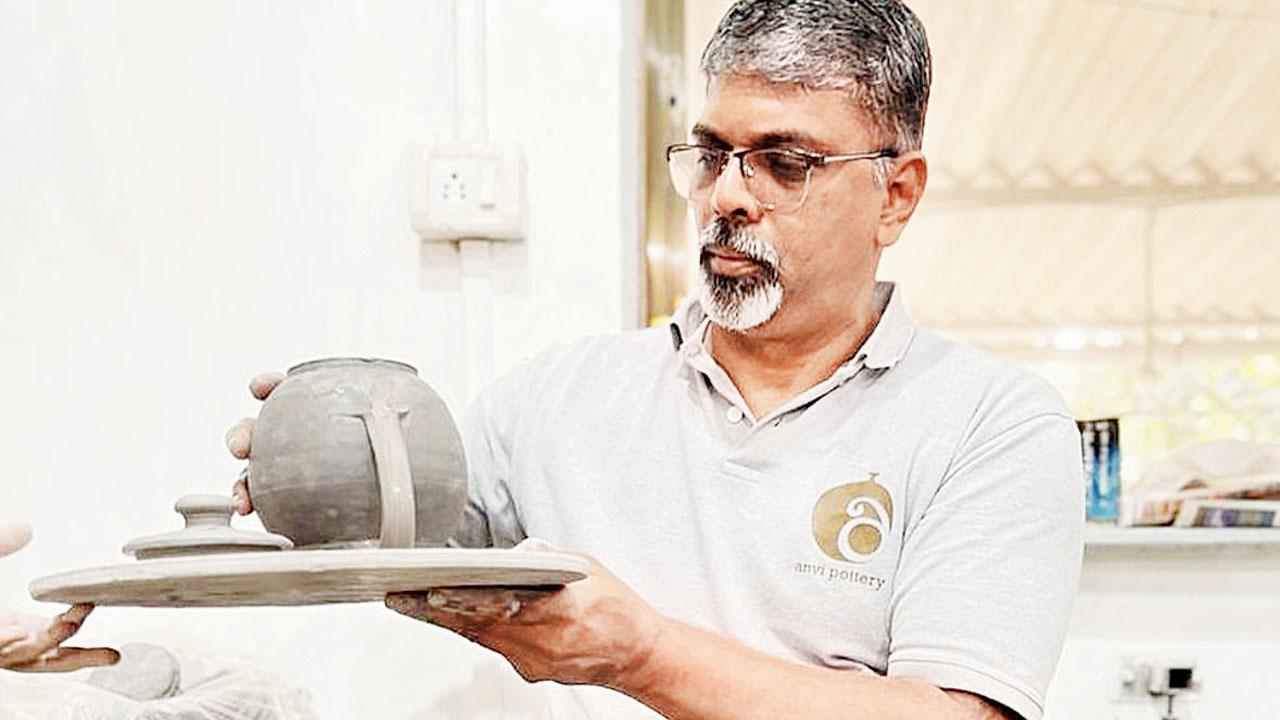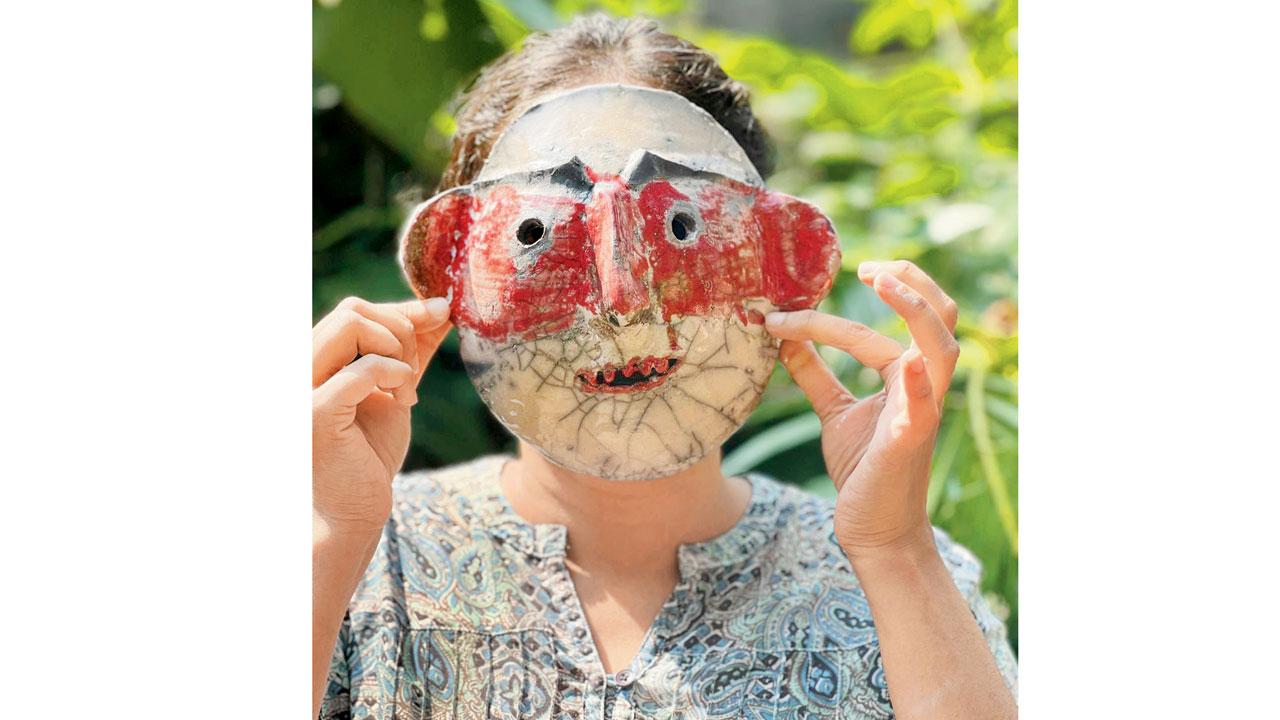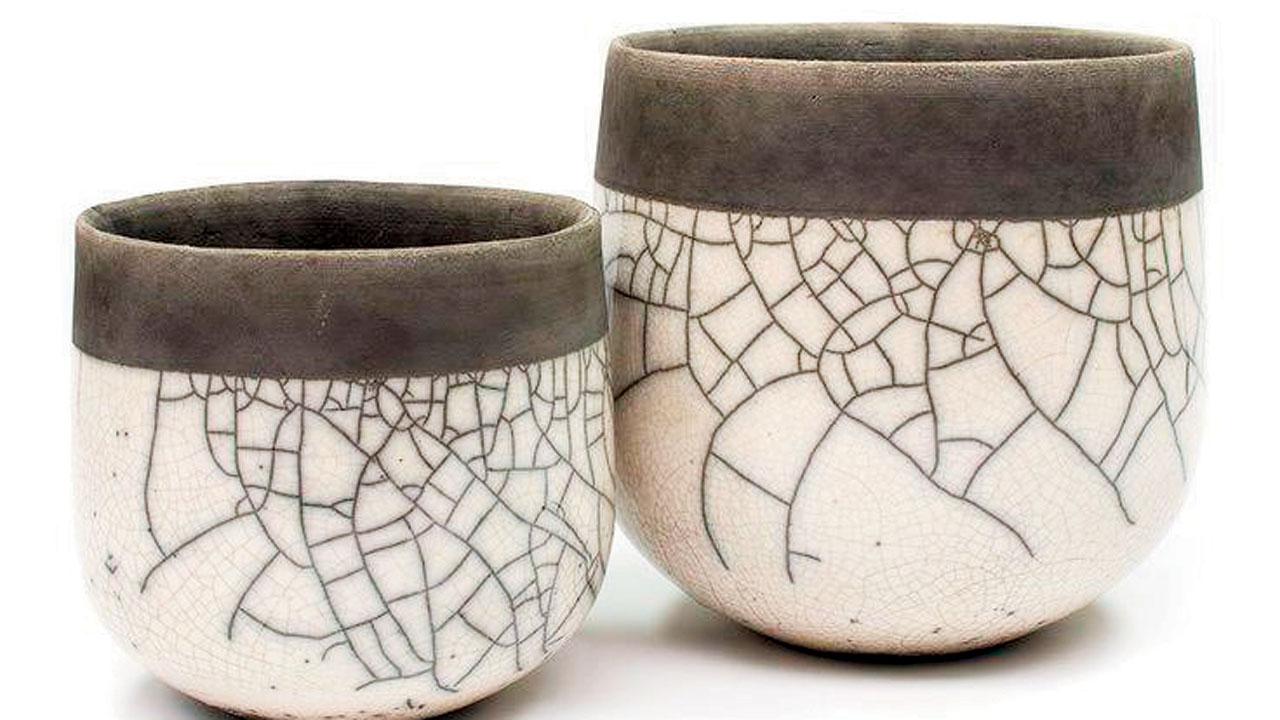A veteran ceramic artist will introduce the city to Raku, an ancient Japanese form of pottery, through a three-part workshop this month

Sandeep Manchekar holds up a Raku pot at his studio in Indapur
In the 1970s, Sandeep Manchekar was your typical schoolboy exploring suburban life in a quiet neighbourhood of Goregaon. If one thing set Manchekar apart; it was his unconventional passion for pottery, one that he kindled by moulding tiny pots at the age of 10. At Studio White & Gray in Byculla this weekend, you might catch glimpses of the young, enthusiastic boy in the now 56-year-old ceramic arts veteran, as he plays with fire to introduce the city to Raku, an ancient, complex, and high-stakes Japanese form of pottery.
ADVERTISEMENT
Manchekar recalls his first tryst with Raku in 1989, fresh out of Sir JJ School of Art where he pursued a diploma in arts and ceramics. Ullas Karde, a veteran ceramic artist from Bengaluru was visiting Kumbharwada, the potters’ cluster in Dharavi, to demonstrate Raku techniques. “I was drawn to the complexities and intricate designs that emerged from the process. I wanted to master it.”

A traditional Japanese mask created using the Raku techniques
Raku, however, is not a passion suited for the faint hearted. Manchekar spent the next two decades learning the art through extensive reading and practical sessions senior ceramic artists like Nirmala Patwardhan. “Raku kilns can reach temperatures of 1,000-degree Celsius within an hour during the firing process. Pulling them out to cool them, avoiding breakages, is the acid test of a ceramic artist. It is only by experience and practice that you ace the timing, and handling techniques,” he reveals. Through the workshops beginning this weekend, Manchekar will aim to share his learnings from the past 30 years with participants in the studio’s safe, controlled environment.
“The spontaneity of the art form keeps me coming back, and makes Raku stand out from anything else I have ever practised,” remarks Manchekar over a phone call from his studio in Indapur in Pune district, where he currently resides along with his creations. This spontaneity, we learn, comes from a process called reduction that uses combustible materials like saw dust and newspapers to cool down the ceramics. “No matter how good you get at predicting these designs with time, the process will always surprise you with unique patterns,” he explains.

Raku cups
Leading up to the workshops where participants will be guided in bringing the art form to life from scratch, the artiste gives us a glimpse of what the rewards of this laborious task look like. “Tiny cracks often appear on the clay and the glaze as a result of the rapid heating and cooling effect. These cracks complement the unruly designs, and what you have is a Raku ware, only one of its kind,” Manchekar shares.
For Gourmoni Das, multimedia artist and co-founder of the studio, the workshop marks another checkpoint on his way to introduce novel practices to the city’s small, but steadily growing community of enthusiasts. “Experienced veterans in the arts, like Manchekar, are ready to share their insights. We strive to provide them the right platform and bridge the gap between them and the learners,” he elaborates.
ON May 18,19 and 25; 10 am and 2 pm
AT Studio White & Gray, The Great Eastern Mill, Byculla East.
LOG ON TO @studio_whiteandgray
COST Revealed on request
 Subscribe today by clicking the link and stay updated with the latest news!" Click here!
Subscribe today by clicking the link and stay updated with the latest news!" Click here!







